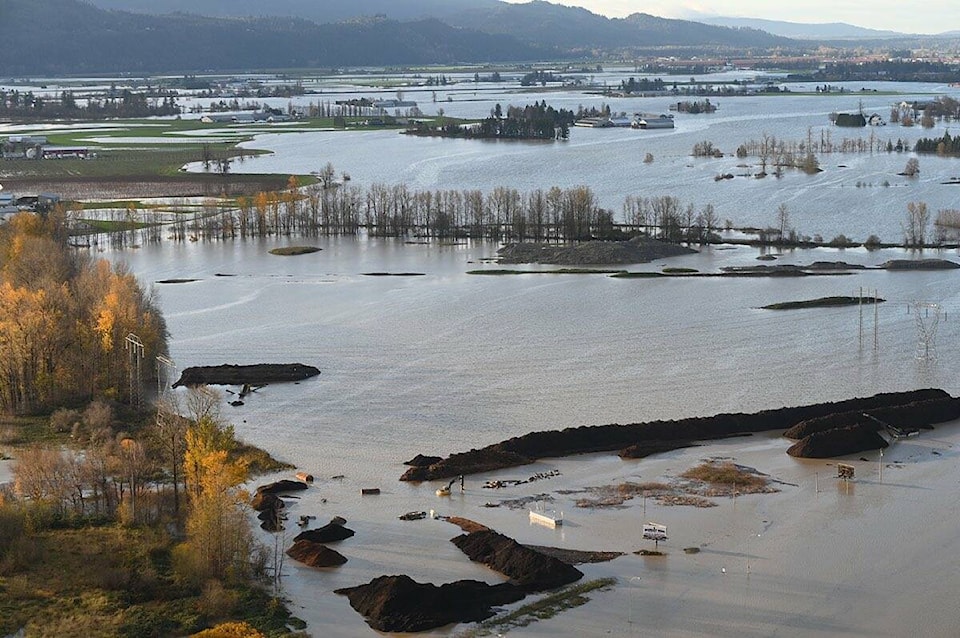I have a running competition with an uncle who lives with Ottawa. I make fun of the snow in Ontario, and he makes fun of the “wet coast” where I live.
Neither one of us has been in the mood to joke about the weather lately. This past week in B.C. alone has been among the scariest weatherwise that I’ve ever seen—not including the summer we just experienced. It started with the record wildfire season that devastated Lytton, B.C., coupled with the “heat dome” that killed nearly 200 people, and now severe flooding that has prompted evacuation of the entire City of Merritt and other evacuations in communities that just three months ago were under similar warnings due to fire.
For two days I waited anxiously to see if Port Alberni was going to be hit with this weather, but incredibly, we escaped.
My first year working at the Alberni Valley News we were hit with a storm that cut off the community, caused widespread flooding, citywide power outages, and was graded just below a hurricane. The paper had only been in operation for three months and I was packing an emergency bag in my car because I hadn’t yet moved to the city and was commuting daily over the Hump.
People were canoeing down lower Third Avenue. One of our reporters had to leave early before access to her house was cut off due to road closures. I camped out at another colleague’s house after the building we occupied on Roger Street at the time was inundated with leaks from the roof and windows. It was a rude indoctrination into the unique weather that hits central Vancouver Island.
Our recent period of weather extremes has brought about extreme ways to describe what has been going on outside: there was the aforementioned heat dome, where we saw 41 degrees Celsius in Port Alberni in August. The old standard of Pineapple Express has given way to “atmospheric river”, and severe storms that form quickly with deep lows coming off the Pacific are now referred to as bombgenesis or bomb cyclones.
A family friend who worked in meteorology before retirement said a developing low pressure system is called a cyclogenesis, and when the barometric pressure of the low deepened quickly “we called it explosive cyclogenesis—and yes, we called it a weather bomb.”
(None of this even brings up the March 27, 1964 tsunami that Port Alberni experienced following an earthquake in Alaska.)
Despite everything western Canada has experienced this year, it could be worse. And that’s scary.
After researching my recent Remembrance Day article about the submarine attack at Estevan Point on the west coast of Vancouver Island, I started reading The Storm on Our Shores by Mark Obmascik. The book is a true account of the Battle of Attu, an obscure clash between American and Japanese military forces in the Aleutian Islands off of Alaska. It is thought the Japanese sub that launched shells at Estevan Point Lighthouse was returning home from that conflict.
Obmascik wrote about the largest natural disaster of the modern world, which happened Sept. 1, 1923 in the Kanto Plain of western Japan. An earthquake, tsunami, typhoon and firestorm lashed together on the same day, beginning with a 7.9 magnitude quake (now called the Great Kanto earthquake). Cooking fires lit the area on fire while in another area a 40-foot tsunami receded and flooded a river.
When sudden high winds whipped in from the coast it created a 300-foot-high fire tornado that people at the time called a “dragon twist.” It sucked away all the oxygen in its path, killing people instantly.
In the aftermath, 140,000 people died and two million people were left homeless after half the buildings in Tokyo collapsed.
I shudder to think what the damage would be if all that happened in 2021.
— Susie Quinn is the Alberni Valley News editor
